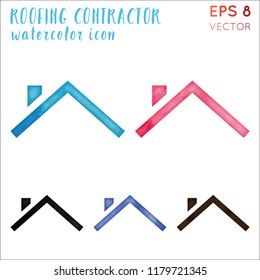How Weather Condition Affects Industrial Exterior Painting: What You Need To Know To Make Certain Top Quality Results
How Weather Condition Affects Industrial Exterior Painting: What You Need To Know To Make Certain Top Quality Results
Blog Article
Developed By-Conway Abdi
When you're intending a commercial outside paint project, don't take too lightly the influence of weather condition on your results. You need to take into consideration variables like temperature level, moisture, and rainfall, as they can make or damage your paint job. As an example, did you recognize that optimal problems ask for details temperature level ranges and moisture levels? Falling short to check these facets can cause unequal surfaces or even damage to fresh paint. Comprehending these aspects is vital to achieving a lasting, professional outcome. So, what specific climate condition should you watch out for?
Temperature level Considerations
When it pertains to business outside painting, temperature level plays an important duty in the result of your project. If you're repainting in severe warmth, the paint can dry as well rapidly, bring about problems like inadequate bond and irregular coatings. You want to go for temperatures in between 50 ° F and 85 ° F for the very best results. Below 50 ° F, paint may not cure appropriately, while over 85 ° F, you take the chance of blistering and cracking.
Timing your task with the ideal temperatures is crucial. Start your work early in the morning or later in the afternoon when it's cooler, particularly during warm months.
Also, think about the surface temperature level; it can be dramatically greater than the air temperature, specifically on sunny days. Utilize a surface thermostat to examine this before you begin.
If temperatures are unforeseeable, keep an eye on the weather report. Sudden temperature level drops or warm front can hinder your strategies. You don't wish to start repainting only to have the problems transform mid-project.
Humidity Degrees
Moisture levels significantly affect the success of your commercial exterior painting job. When the moisture is too high, it can prevent paint drying and healing, resulting in a range of concerns like inadequate attachment and end up quality.
If you're intending a job during moist conditions, you might locate that the paint takes longer to completely dry, which can extend your job timeline and rise expenses.
Alternatively, low moisture can additionally present challenges. Paint may dry too rapidly, avoiding correct application and causing an unequal surface.
You'll intend to keep track of the humidity degrees closely to ensure you're working within the excellent array, generally between 40% and 70%.
To get the best outcomes, take into consideration making use of a hygrometer to gauge moisture before beginning your job.
If https://docs.google.com/spreadsheets/d/1j7GNoDkECNMc5KWh5sDqoloW_WNmkxMi7i1LH8nqWBg/edit?gid=1478569196#gid=1478569196 discover the degrees are outside the optimal range, you might need to readjust your schedule or pick paints created for variable conditions.
Always seek advice from the maker's guidelines for particular referrals on humidity tolerance.
Rainfall Effect
Rainfall or snow can dramatically interrupt your commercial exterior paint strategies. When rainfall occurs, it can get rid of fresh used paint or produce an unequal coating. Preferably, you want to select days with completely dry weather to make certain the paint adheres appropriately and treatments successfully. If you're captured in a rain shower, it's ideal to stop the task and wait on conditions to improve.
In addition, snow can be even more destructive. Not just does it produce a damp surface, however it can additionally reduce temperature levels, making it difficult for paint to dry. This can result in problems like peeling or blistering down the line.
It's vital to inspect the weather forecast before starting your task. If https://docs.google.com/spreadsheets/d/1Tid_hF0uioTwMJzSrBHoMrPIAx-wl2i5wtI8-EBAF-g/edit?usp=drive_link or snow is predicted, consider rescheduling.
Constantly remember to permit sufficient drying out time in between coats, specifically if the weather condition stays uncertain.
Conclusion
In conclusion, keeping an eye on the weather is necessary for an effective industrial outside painting project. By keeping an eye on temperature level, moisture, and precipitation, you can guarantee the very best conditions for application and healing. Remember to prepare your job around positive weather and always follow supplier guidelines. With moved here , you'll attain a durable, lovely coating that can withstand the aspects. Don't let the weather condition capture you off-guard-- stay notified and repaint smart!
